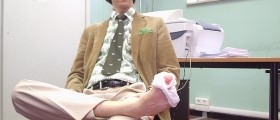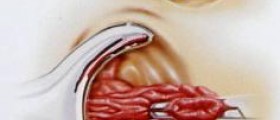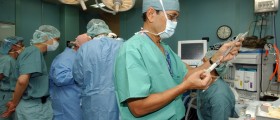
Warts
Warts are caused by human papillomavirus. This virus is commonly present almost everywhere around, and it has over 100 known types. Different types cause different problems. The virus usually penetrates the body through damaged skin. Human papillomavirus can also cause genital warts, but that is a different topic.
Types of warts
There are five main types of warts. Common warts, which usually appear on hands, are round and brownish-gray in color.
Plantar warts appear on soles of the feet. They form a rough patch of skin with tiny black specs. They can be painful during walking because of the pressure the body exercises to the foot.
Flat warts commonly grow on face, arms and legs. They are small, flat and pink, yellow or light brown.
Filiform warts grow around mouth, nose and chin. They are the same color as the skin, with small threads sticking out.
Periungual warts can grow under or around fingernails and toenails. They look like bumps and can affect the nail growth.
Surgery for wartsThere are different ways to treat warts, some of them can be done at home, and some at a doctor’s office. If a wart is causing problems and if all the other treatment has failed, surgery can be an option.
Surgery for warts is usually quick and effective, although it may be pricey. Also, there is no guarantee that a wart will not come back again after the surgery, because the procedure only removes the growth, and not the virus, which can still be present in the body and cause new warts.
The most common procedures for removing warts are electrosurgery, curettage and laser surgery. Electrosurgery and curettage often go together. In electrosurgery, the wart is burned with electrical current and in curettage it is scraped or cut off. In laser surgery, the wart is also burned, but with a laser beam pointed to it.
All three procedures cause pain so doctors use local anesthetic to numb the area. That way the procedures are painless but there may be some pain once the anesthetic wears off. Surgery for warts may or may not leave the scar. It depends on their location, severity, type, etc. If a scar forms after plantar wart surgery, it can be very painful.
Surgery for removing warts is not recommended for young children.

















Your thoughts on this
Loading...